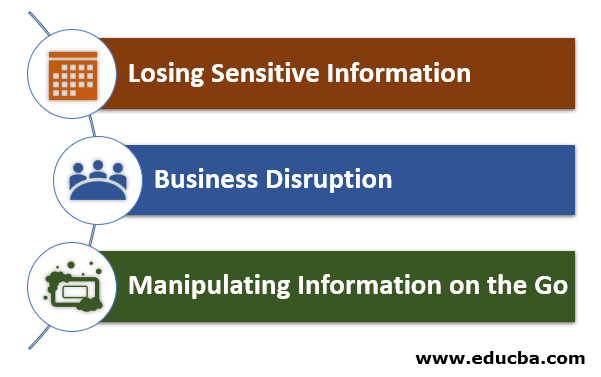
Introduction to IoT Security Challenges
With technological advancements, almost infinite bandwidth, and cheap data rates, IoT use cases are growing rapidly across domains. The estimated IoT budget for Europe in 2020 is expected to surpass 240K Euros. Along with the increasing use cases, the carriers also want to connect IoT suits with fast, ready-to-market capabilities. These things altogether leave the major security loopholes behind. In this article, we will go through the major security challenges for IoT use cases.
Factors of IoT Security Challenges
As per the statistics, over 25 billion connected devices are active, which may exceed 100 billion in the upcoming decade. The major security loopholes of IoT systems are factors of the below variables.
1. Use of Default Password or Same Password for a Long Time
Vendors often configure many IoT devices with an initial common password that is generic across their products. Users sometimes leave the password unchanged when these devices are hooked to an existing ecosystem. Alternatively, users set an initial password without a proper maintenance policy and forget it. These practices make the whole system vulnerable to malware and other harmful software. Using a default username and password compromises the IoT system and allows hackers to access the whole business network.
2. Improper Testing and Faster Ready to Market
Manufacturers of IoT components are always interested in delivering their products as soon as possible (Ready to market). Traditional business leaders are more interested in solid proof of results and actionable insights as fast as possible. To cope with the market needs, in many cases, vendors ignore proper testing and find security loopholes in their systems. This may lead to compromise the security needs. These are the main reasons why traditional sectors like Insurance and BFS, which deal with sensitive data, are still far away from using these systems.
3. Reusing Legacy Systems for IoT
The initial cost of setting up and maintaining IoT infrastructure is too high. Also, there are sectors like telecom where the cost of legacy infrastructure is too high to replace with newer ecosystems completely. To maintain a balance between them, carriers often reuse the legacy infrastructure for newer purposes. Modern security threats are something these legacy systems were not designed to cope with, but they still serve their purpose. This may lead ill practitioners to gain illegal backdoor access to the organizational system.
4. Use of Multi-Device Systems and Cross-Platform Architectures
Industry-grade IoT systems use various cross-platform technologies and tools in the technology stack. These multi vendors’ systems deal with dependency on security measures.
For example, in a use case, sensor data are used to capture the analog signals; these are converted to a digital signal by vendor system A, and these data may be preprocessed by vendor system B. Users can access the results through multiple systems, such as mobile devices, desktops, smart wearables, and more. These interdependencies can create vulnerability for the whole ecosystem.
Effects of IoT Security Breach
The loopholes of the IoT ecosystem may lead to the following problems for the business:
1. Losing Sensitive Information
Medical, insurance, banking, and other industries have incorporated IoT devices. Compromising these systems may leak the client’s medical information, banking, or financial details to the black hat hackers.
2. Business Disruption
Due to the vulnerability of any node of the IoT ecosystem, hackers may obtain backdoor access to the whole business servers. The dot net revolution has digitized almost every business. Partially compromised nodes can also lead to disruption of the whole business process.
3. Manipulating Information on the Go
As discussed, sensitive user information flows over the IoT nodes and connected hubs. Hackers can manipulate the information on the go, which may lead to long-term effects. Suppose in a medical use case if the back door accessed application changes the health information, the actions also change. Without proper supervision, which may lead to life-threatening challenges. Almost every IoT use case nowadays integrates machine learning computing engines. Feeding or manipulating wrong data to these systems also changes the actionable insights, ultimately leading to business loss.
Recommended Security Measures for IoT Systems
Now let’s discuss some recommendations for designing security layers for IoT applications:
- Encrypted Communication: In an IoT ecosystem, lower-level data are captured using sensors and other IoT endpoints connected to the gateways and compute engines. Vendors and middleware service providers must provide end-to-end encryption while data flows through these layers. For example, Microsoft is working on deploying BitLocker encryption systems in their IoT platforms.
- State-of-the-Art Firewalls and Malware Database: IoT vendors and carriers should use state-of-the-art firewalls and anti-malware systems at various nodes and computation points.
- Periodic Upgrades and Authentications: The network connection of IoT devices generally relies on one-time authentication. However, experts recommend enforcing a periodic authentication policy instead of this practice.
Conclusion
This article discussed an IoT use case’s various security challenges and threats. We have also gone through various measures that need to enforce in a stable ecosystem to minimize the risks. IoT ecosystems are still an active area of research, and no standard framework fits all IoT use cases.
Recommended Articles
This is a guide to IoT Security Challenges. Here we discuss the factors, effects, and recommended security measures for IoT systems. You may also have a look at the following articles to learn more –

